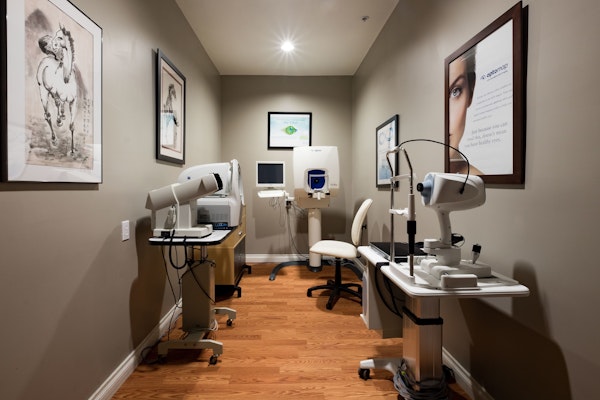What Is 20/20 Vision?
 Even if you do not routinely attend eye exams, you have heard the term 20/20 vision. But what does it really mean? Today, our team at Gordon Wong Eye Designs and Optometry in La Jolla, CA discuss what 20/20 vision is and how visual acuity is measured.
Even if you do not routinely attend eye exams, you have heard the term 20/20 vision. But what does it really mean? Today, our team at Gordon Wong Eye Designs and Optometry in La Jolla, CA discuss what 20/20 vision is and how visual acuity is measured.
Our team offers comprehensive vision care, including diagnostic testing and state-of-the-art treatments. No matter what your needs, we can deliver the top-tier care you deserve.
Visual Acuity: What 20/20 Really Means
If you have been to the eye doctor, you are familiar with the Snellen chart. This simple tool measures visual acuity with lines of letters in progressively smaller type.
To understand vision testing, it is important to understand that 20/20 is considered normal vision. When an individual has 20/20 vision, it means that he or she sees the same line of letters on the Snellen chart at 20 feet that a person with typical vision sees at 20 feet.
An individual with 20/15 vision has better-than-average vision, because he or she can see letters at 20 feet that someone with 20/20 vision can only see at 15 feet.
In contrast, a patient with 20/40 vision sees at 20 feet what an individual with normal vision sees at 40 feet.
It is also important to understand that 20/20 does not always indicate perfect eyesight. This number only refers to the clarity or sharpness of vision at a particular distance.
Your overall visual acuity will depend on several other factors as well, including peripheral vision, focusing ability, color vision, eye coordination, and depth perception.
Levels of Vision
Now that you have a basic understanding of the Snellen chart and visual acuity, we will take a look at the different levels of vision:
- 20/20: As aforementioned, this is considered “normal” vision. It is also the minimum requirement for fighter pilots.
- 20/40: Individuals with 20/40 vision are able to successfully pass the driver’s license test in all 50 states. The majority of printed material is at this level.
- 20/80: Those with 20/80 vision are able to read most new headlines and alarm clocks.
- 20/200: This is considered legal blindness, although individuals with 20/200 can typically see the letters on a stop sign.
Defining a Diopter
A diopter is a unit of measurement used to determine the amount of refractive error present. If the number is positive, it denotes hyperopia, or farsightedness. If it is negative, it indicates myopia, or nearsightedness. For example, a -1.00 diopter patient will be able to see letters or objects clearly at one meter, while a -2.00 diopter individual can see objects at half a meter clearly.
Your Vision Prescription
When you receive your vision prescription, it can be difficult to know what the numbers mean. The first number indicates the level of myopia or hyperopia.
If a second number is present, it measures the amount of astigmatism. The third number refers to the axis of the astigmatism.
If numbers are added in the “add” column, it denotes the amount of magnification necessary to provide clear near vision. This is present only if bifocals have been prescribed for presbyopia, or age-related farsightedness.
Contact Us to Learn More
A visual acuity test can help you learn more about your eyesight. To schedule a consultation at our practice, contact us online or call us at (858) 454-4699.







